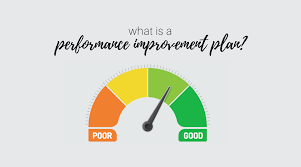Performance Improvement Plans (PIP)

What do I do if an employee’s performance is poor?
Every employer has had it happen to them – they interview an individual who they think would be perfect for a position – but, once they start working, it doesn’t quite go according to plan. After providing an appropriate amount of time for training and adjustment, you still find that the employee is slow in completing their tasks, having difficultly prioritizing, and asking the same questions over and over again. You’ve already invested a lot of time and money in hiring and training this employee. You don’t want to fire the employee but you don’t know the best approach to improving their performance. So what do you do?
If you haven’t yet, you should have a conversation with the employee and remind them of the goals they should be meeting. The first conversation with the employee might be an informal meeting to point the employee in the right direction. If, after this conversation, the employee continues to make mistakes in the same vein, you may consider issuing the employee a formal, written warning that documents the specific mistakes that the employee made, how the mistakes affected the health of the company, and future consequences if their performance continues to suffer. You, a reliable witness, and the employee should all sign and date the warning after it is reviewed with the employee.
Some employers don’t want to issue formal warnings to employees with performance problems unless the employee’s mistakes have considerably cost the company. If that is the case, then it may be best to consider enacting a performance improvement plan (PIP) for the employee. PIPs detail the areas where the employee needs improvement, the goals you expect them to be meeting, and a reasonable time frame within which to meet these goals. The most important thing of the PIP is that you offer and ask ways in which you can assist the employee in meeting these goals – whether this involves reviewing policies with the employee or providing additional training. You may discover that the employee feels uncomfortable in completing certain tasks because they are unsure on how to go about them or feel ill-equipped. You will want to identify a consequence, such as disciplinary action, demotion/transfer to a different position, or possible termination if the employee doesn’t meet the goals in the designated time frame. The PIP should be signed and dated by you, the employee, and a reliable witness.
PIPs are a good tool that highlight not only what you expect of the employee, but also that you care enough about them to invest the time and resources in helping them to succeed in their position. Employees who successfully complete their PIPs generally come out the other side feeling empowered and secure in knowing what is expected of them in their role. As an employer, creating and implementing a PIP also provides you with a better understanding of what it takes to keep good employees; you’ll learn to communicate and share information better, set priorities, make task lists, and become more cognizant of your employees’ day-to-day tasks and work ethic. Clients are encouraged to contact us whenever they need to develop and implement a PIP for their employees – we can help!


